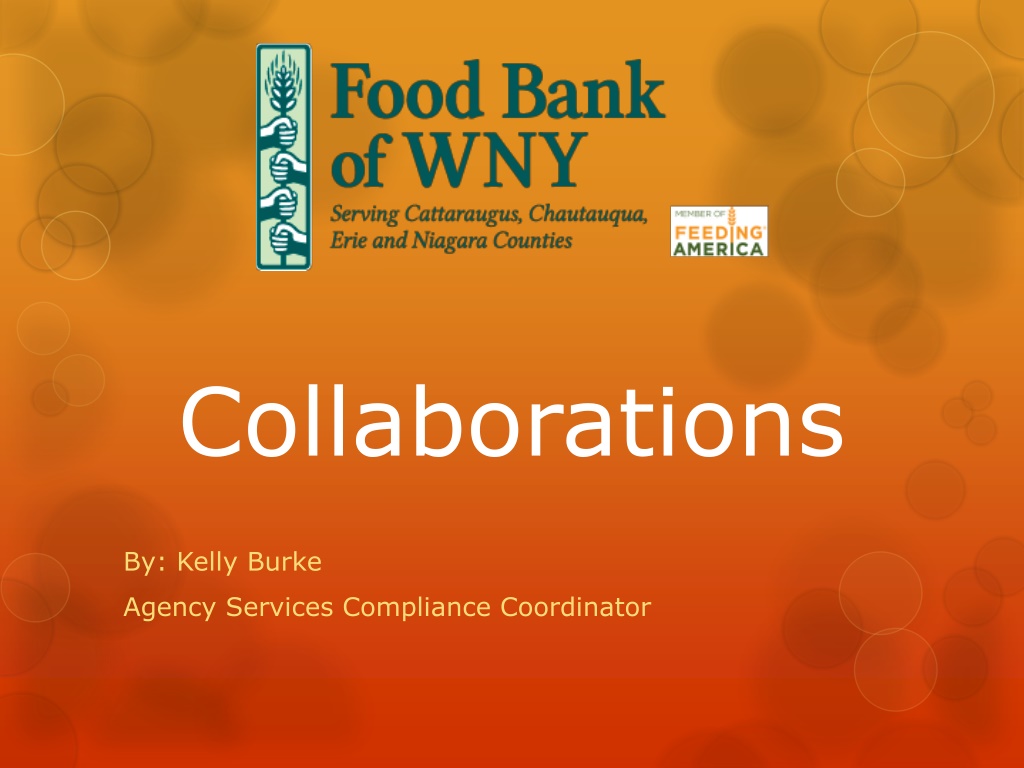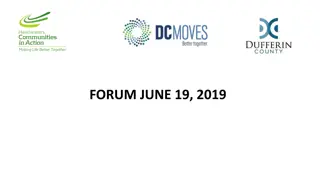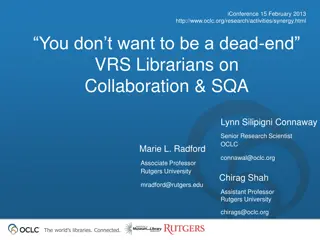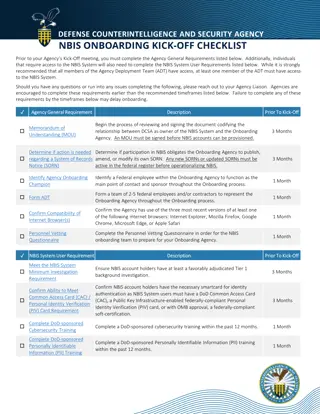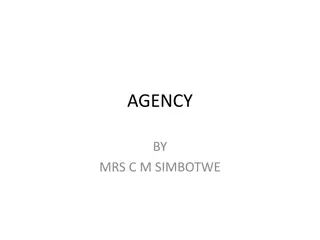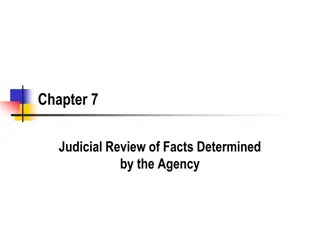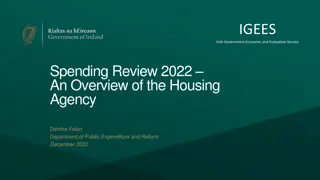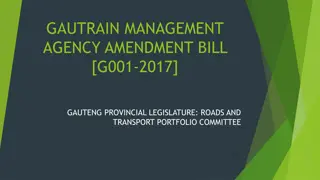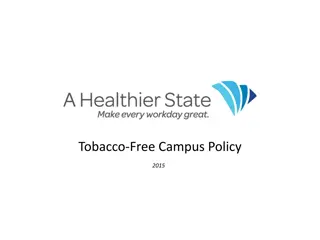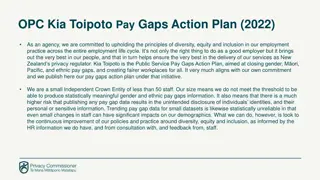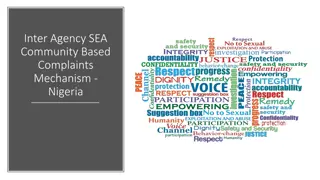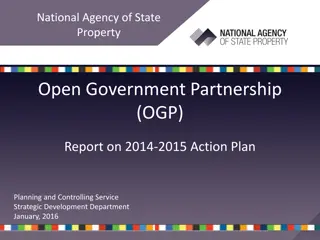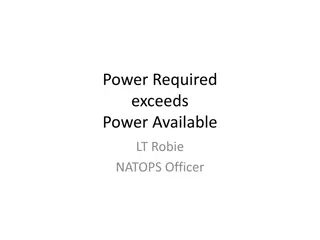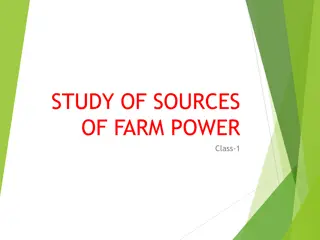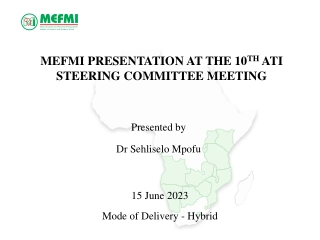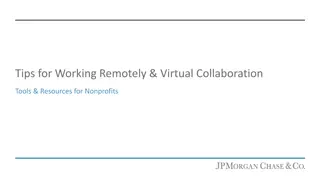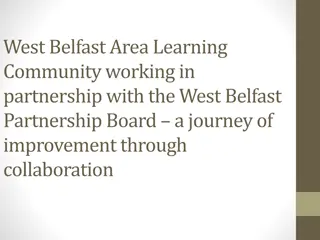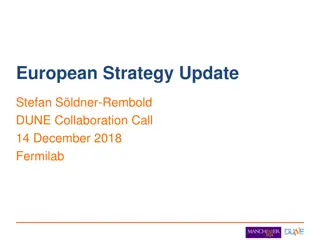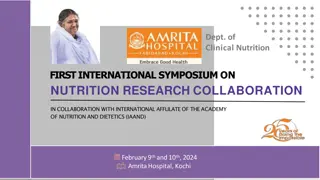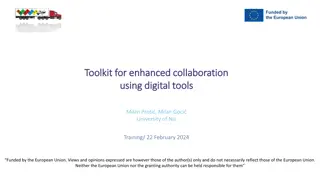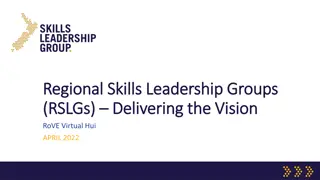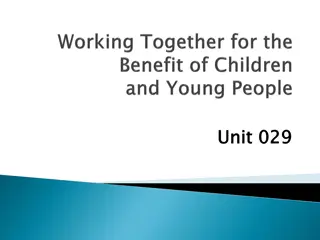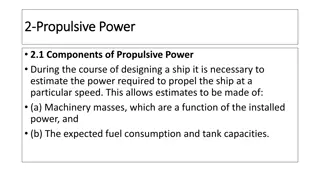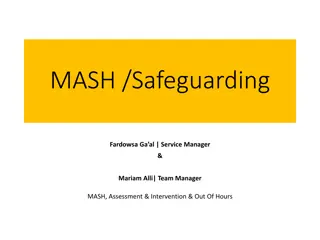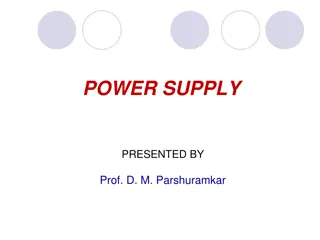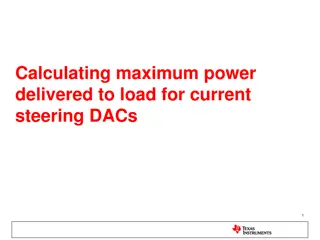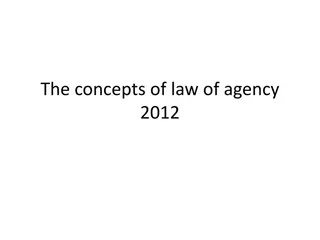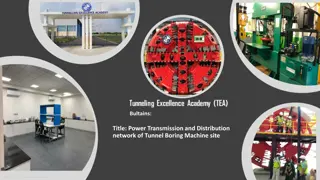Understanding the Power of Collaboration in Agency Services
Collaboration, a cooperative arrangement between parties working towards a common goal, is essential for knowledge sharing, conflict resolution, and maximizing resources. Despite misconceptions, agencies benefit from collaborating through networking, knowledge exchange, and increased funding opportunities. Different methods and types of collaborations provide diverse avenues for cooperative efforts to thrive in various sectors.
Download Presentation

Please find below an Image/Link to download the presentation.
The content on the website is provided AS IS for your information and personal use only. It may not be sold, licensed, or shared on other websites without obtaining consent from the author. Download presentation by click this link. If you encounter any issues during the download, it is possible that the publisher has removed the file from their server.
E N D
Presentation Transcript
Collaborations By: Kelly Burke Agency Services Compliance Coordinator
Definition Collaboration 1. General: Cooperative arrangement in which two or more parties (which may or may not have any previous relationship) work jointly towards a common goal.
Definition Collaboration: 2. Knowledge management: Effective method of transferring 'know how' among individuals, therefore critical to creating and sustaining a competitive advantage.
Definition Collaborations: 3. Negotiations: Conflict resolution strategy that uses both assertiveness and cooperation to seek solutions advantageous to all parties. It succeeds usually where the participants' goals are compatible, and the interaction among them is important in attaining those goals. - Businessdictionary.com
Reasons Why Agencies Dont Collaborate Never thought about it Don t know who to partner with Don t want to seem like you don t know what you are doing I can handle this Feel like others may be in competition with your program for resources Don t want others telling us what we should do Time consuming Let s discuss some of these misconceptions.
Reasons Why You Should Collaborate: Networking the more people and programs you know, the more you can stay in touch with the many services available Knowledge We all have information to share Funding increasingly, funders are looking to see that they aren t paying for duplicate services and want to see more collaborative efforts.
Types of Collaborations Networks Coalitions Movements Strategic Alliances Strategic Co-Funding Public-Private Partnership Collective Impact Initiatives Hand-out elaborating this.
Examples of Collaborations Sharing perishable food pick-ups from outside sources Sharing one of the Food Bank s Mobile Pantries clients, responsibilities and location Working with other non-profits with volunteer opportunities. Group homes residents may be looking for meaningful volunteer experiences. Working together on a fund-raiser.
Examples of Collaborations (continued) Working together on a awareness campaign Bouncing ideas off each other on ways things work best such as with client choice at pantries Pantry coalitions to meet to discuss service areas, concerns and upcoming events Working with your local government agencies to get support
Where to Start Think about an area of need, a goal you have or an area of interest where you think would be beneficial. Sit down with your team and brainstorm ideas of where to look or identify connections people have. (This is a collaboration already!) Tip: scrolling through 211WNY.org can be a great place to look! (They are here today!) Put together on paper a clear and realistic set of things you are looking for and goals you would like to meet.
Next Reach out to those you have come up with. The formality of this will vary based on whom you are contacting. (A local non- profit you may be able to start with a phone call. A politician perhaps needs a letter). Let them know your needs/interests and have reasons why it would be of interest to them as well. (Remember a collaboration is meant to benefit all parties.) Arrange a meeting and be prepared for it
Listen to Their Needs When you meet, listen to their needs and think about ideas that could work for everyone. For those that are creative and open to new ideas, this can be a very exciting time and wonderful to hear fresh input or a different side of the story or angle on things. This may even open your eyes to new possibilities.
Keys to a Successful Collaboration Clear and realistic expectations Documentation on what each participant agrees upon as their role/responsibility so there is no confusion Meet regularly to keep the momentum going and assure all parties are meeting their deadlines/responsibilities and address issues or opportunities Be prepared to adjust goals or tactics as needed, with all parties agreeing
What if a Collaboration is No Longer Working? Remember, the purpose of collaborations is for all parties to mutually benefit If their comes a time when it is no longer working, first try to realign the group. It is not a collaboration if any of the parties are being overburdened It is ok to step back on good terms and leave future opportunities open.
Start Right Away Start collaborating right away. Many of your best allies are right in this room, others may be at the information tables in the hall! It doesn t have to be big to make a big difference.
Retail Donation Programs By: Omar Parra Food Sourcing Coordinator
Our Neighbors Cattaraugus county: 9,241 individuals (17.5%) live in poverty. Those numbers reflect 2,781 families. Chautauqua county: 19,878 individuals (19.4%) live in poverty. Those numbers reflect 5,547 families. Erie county: 95,090 individuals (12.7%) live in poverty. Those numbers reflect 31,599 families. Niagara county: 15,573 individuals (13.6%) live in poverty. Those numbers reflect 5,416 families. Data based on statistics from Feeding America Map the Meal Gap 2018; New York State Community Action Association New York State Poverty Report 2018; and Food Bank of WNY, as of March 2018.
Retail Partnership What is a Retail Partnership? The importance of the partnership Established retail partnership program (Feeding America) Agency participation
Retail Partnership Donations from retailers and wholesalers provide members with the opportunity to access a variety of product. Donations consist of perishable and nonperishable items which improve a member's nutritional mix, and household goods which can enhance a recipient's quality of life. Every member has grocery stores within their service area that can contribute to the member's mission. It is estimated that there are more than 800 million pounds available from grocery retailers and wholesalers through the Store Donation Program.
3 Elements of Retail Opportunity 1. Identify capacity/ capability 2. Building capacity/capability with agency 3. Expanding capacity/capability with agency
Identify Capacity/Capability Retail staff are our first line of defense in the battle of hunger. Create an easy to follow process with store management on capturing of viable donations. How can we identify viable donations? Is our agency/pantry a good fit for the program?
Store Unsaleable Food Disposition Guidelines Donate Destroy Produce: in store fresh cut fruit, out of temperature, out of date Produce: package/product damaged package still must be closed, must not impact food safety Bakery: all in store produced bakery items are eligible, both in and out of date (thaw and sell still frozen) Bakery: Thaw and sell pumpkin/ sweet potato pie. Anything past sell by or expiration date but can be frozen before that date
Building Capacity with Agency Create Plan of action for pick-ups (dates & times) with partnered agencies. Follow recording requirements weights and proper unsalable disposition guidelines Adjust as needed (+/-) pick-up times and frequencies. How will product be picked up ? (agency vehicle, drop off point, package requirements totes/boxes etc.) Volunteer base?
Expanding Capacity with Agency Fresh and nutritious product Higher product yield Better quality and condition Less Handling Faster inventory turns Stronger Agency/ FB partnerships Localized donor relationships , better rapport Efficient- Cost effective - ROI savings
Other Agency Collaboration Medium size pantries can combine pickups for a retail location or alternative days. Pickups should coordinate with pantry days for clients (1-2 days before). We do not cherry pick product. Open communication with your neighboring pantries. Accurate reporting necessary for all agencies involved
Example of Shared Retail Pickup Current Reporting: Agency #1: Walmart 1000 pounds Target 1000 pounds Sam s Club 1000 pounds Using Agency #1 as Pick-up Agency: Agency #1: Walmart 500 pounds Target 500 pounds Sam s Club 500 pounds Agency #2: Walmart 250 pounds Sam s Club 500 pounds Agency #3: Walmart 250 pounds Target 500 pounds
Reporting From the Partnership o Identify potential growth by store o Prioritize allocation of resources o Benchmark programs within the network o Qualify non-participating retailers Accuracy of data in each member s report is dependent upon the accuracy of receipt data submitted to Feeding America during the reporting timeframe (also receipt dates!).
Agency Facilitated Pounds What are agency facilitated pounds Method of recording and frequency Importance of the program and accuracy Not to be confused with retail poundage reporting!
